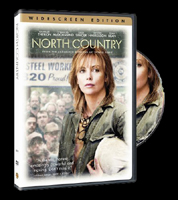 BUY IT AT AMAZON: CLICK HERE!
BUY IT AT AMAZON: CLICK HERE!
STUDIO: Warner Bros.
MSRP: $28.98
RATED: R
RUNNING TIME: 126 Minutes
SPECIAL FEATURES:
• Making-of featurette
• Additional scenes
• Theatrical trailer
Filmmakers
going for high drama have quite a balancing act to perform. They have to spell
out the rules of the film so the audience doesn’t get distracted from the
characters, while maintaining a natural tension that withers under too much
exposition. If a filmmaker holds the audience’s hand for too long, the drama
fizzles; if the drama has no concrete setting, the story hangs disconnected in
the viewer’s mind.
Even
worse are those times when a director feels the need to exposit on the
characters as well as the world. Character dramas thrive on the creation of
their believable inhabitants. When a director aborts her characters’ growth,
the audience loses the chance to participate in the drama; instead, they feel
like what they are: witnesses to a story or, worse, a lie.
It’s like watching a fumble-footed tightrope walker. You hope, for the sake of
your entertainment, that she makes it safely to the other end, but you can’t
help but place your bets on her plummeting to the ground.
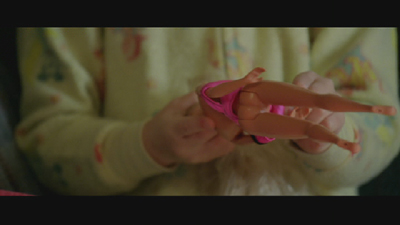
Welcome to a film about positive female role models.
The Flick
For the
first half of the film, that tightrope walker does a fine, steady job. The
quiet world of the miners of northern
retreating fog bank, and the characters emerge on the points of conflict, ready
for development and sympathy. A frame story is established with Charlize
Theron’s character Josey participating in the hearing for her class action
sexual harassment lawsuit against her employers at the mine. Rather than
unloading all the details of the suit in the first few minutes, there is a
restraint to the exposition which is both subtle and refreshing.
The story
emerges in flashbacks focusing on Josey, her estrangement from her husband, her
employment at the mine, and the ensuing discrimination that is heaped upon her
by many of her male coworkers. The most praiseworthy aspect of this first half
of the film is the way it sustains the audience’s sense of outrage. Josey is a
wholly sympathetic character — not because she’s a single mother working hard,
but because she is a different aspect of the everyman — and the relentless
abuses that she and her female coworkers suffer at the hands of the men are
disgusting. It’s a lot to ask to maintain a believable anger for a solid hour
of film, but
This
conflict is intensely political, rooted in the story archetype of throwing grit
into a massive gear. The male-dominated workplace of the mine runs like a
machine, with a momentum that is difficult to reverse. I don’t want to call the
film a metaphor for any other similar struggle, but it is a well-portrayed
analogue that will put the audience in mind of political agitation, or any
situation in which a single monkey-wrench must decide whether or not it is wise
to leap into the giant gear’s teeth.
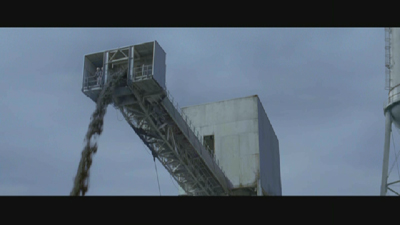
Transform to… Brontobot!
Unfortunately,
once Josey the Monkey Wrench decides to jump, the film slips its own gears. The
tightrope walker tumbles. Right around the point that Josey begins considering
legal action against her employer, the film switches from drama into melodrama.
In the first half, the situations informed character development; in the second
half, characters exist to wrap situations around. The anchor of Charlize
Theron’s performance is cut loose.
It’s a
shame for a number of reasons, but none are more frustrating than broken
promises. This isn’t about expectations an audience has going into a film cold,
but the expectations that form during the first sixty minutes. The audience has
good reason to come to expect a satisfying drama, conclusions to character
arcs, come-uppance, and victory. A fine stable of actors — including Frances
McDormand, Sean Bean, and Woody Harrelson in addition to Ms. Theron — are
demoted from playing characters to playing pawns.
The
film’s failures become most evident in the third act, which is dominated by a
return to the frame story’s courtroom sequence. Not only is the court drama
mishandled in clumsy, Hollywood fashion (e.g. the judge shouts for order once
and then gives up as the lawyer hams it up), but it’s also bereft of any
character engagement. It’s a literal melodrama, since the only conflicts
present are between testimonial situations.
The third
act also botches the development of the protagonist with the interesting choice
of flashing further back into Josey’s past. A secret is revealed and, without
spoiling anything, I’ll say that it instantly transforms her from a strong
woman into a reactionary. The revelation adds to the melodrama, but detracts
from Josey’s character.
Wrapping
up the conclusion is a sequence of unearned sentimentality that might have been
appropriate had the preceding sixty minutes not jettisoned all sympathy the
audience had for Josey. Sympathy for the situation still remains, but a
lifeless situation doesn’t need standing up for, figuratively or literally.
first half gets wiped completely by the clumsy, distancing second half. A
parade of talents on both sides of the camera make for good viewing, but the
heart that drives them forward freezes up and dies in the cold North.
6.2 out of 10
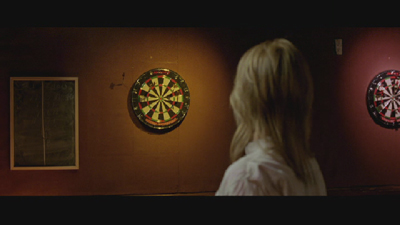
Nice work, Robin Hood.
The Look
It’s hard
to find much of anything to say about the visuals of this disc. They’re cleanly
transferred, in 16:9 widescreen, and pretty much devoid of color. There is a
lot of snow in
desaturated and suitably lifeless.
7 out of 10
The Noise
An
English track and a French track, both in Dolby 5.1. Commendation has to go to
the sound editors and mixers for aiding in the creation of the world of the
film — there’s not a lot of flashy effects work in
solidifies the town and mine just that much more.
The
score, by recent Oscar winner Gustavo Santaolalla, is subdued and beautiful. It
is done great justice by the mix, and in turn does great justice to the
sensation of isolation that the film evokes.
7.5 out of 10
The Goodies
We’ve got
here your standard DVD loadout, with fluff-laden behind-the-scenes featurette,
theatrical trailer, and justifiably deleted scenes. This is the bare minimum to
qualify for higher than the "bare bones" tag, I guess.
4 out of 10
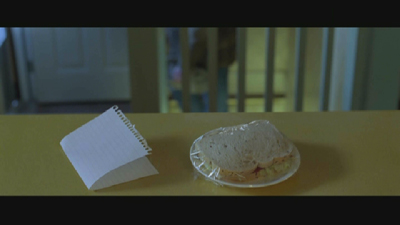
The note reads: DEAR HANK THIS IS A SANDWICH.
The Artwork
Charlize
Theron is a pretty girl. She doesn’t ever look quite so pretty during the film,
not even when she’s knee deep in axel grease. She also looks more like Meg Ryan than herself. The washed-out,
near-monochromatic color scheme is a good fit for the movie’s palette, and
stands as different from most anything on the DVD shelf at your local
rent-a-matic, other than Saw.
7 out of 10
Overall: 6.3 out of 10